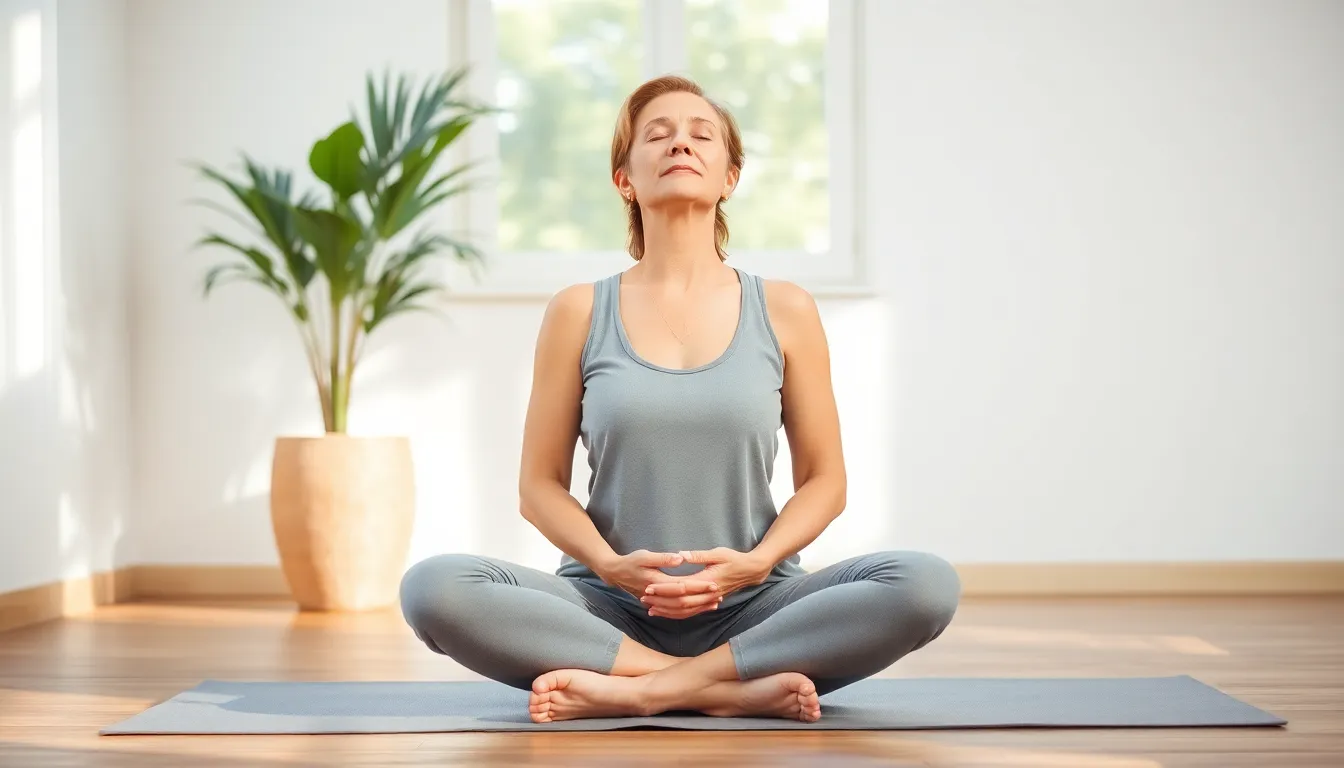Table of Contents
ToggleIn a world buzzing with distractions and endless to-do lists, finding a moment of peace can feel like searching for a unicorn in a haystack. Enter the body scan mindfulness script—a simple yet powerful tool that helps individuals reconnect with their bodies and embrace the present moment. It’s like giving your mind a spa day while your body kicks back and relaxes.
Understanding Body Scan Mindfulness Script
Body scan mindfulness represents a focused approach to enhancing self-awareness and relaxation. Practitioners engage in this technique to systematically direct attention to various body parts. The process often begins with deep breathing, helping to center thoughts and reduce distractions.
Participants typically lie down or sit comfortably, encouraging a state of calm. After settling in, they focus on the sensations present in their feet, gradually moving up to the head. Each body part receives attention, allowing individuals to acknowledge tension or discomfort.
The script guides users through awareness of their physical sensations, emphasizing acceptance and non-judgment. Practicing this mindful observation can foster greater emotional and physical well-being. Research indicates that incorporating body scan mindfulness may decrease stress and anxiety, contributing to improved mental health.
Listeners may find it beneficial to utilize audio recordings or written scripts to facilitate the practice. This assists in maintaining focus and encourages a deeper experience. Regular practice can enhance the body’s natural ability to relax and rejuvenate, promoting overall wellness.
Setting aside time for body scan mindfulness enhances its effectiveness. Participants who engage in this practice consistently often report increased feelings of tranquility and clarity. By incorporating various elements such as guided images or ambient sounds, practitioners can further enrich the mindfulness experience.
Benefits of Body Scan Mindfulness


Body scan mindfulness offers numerous advantages, enhancing both physical health and mental well-being.
Physical Benefits
Body scan mindfulness promotes relaxation across the entire body, reducing muscle tension. Participants often experience improved circulation, as awareness encourages blood flow to various areas. Enhancements in sleep quality frequently occur, contributing to overall recovery and rejuvenation. Practicing this technique can alleviate chronic pain symptoms by fostering greater body awareness. Increased flexibility tends to emerge as one learns to release tension stored in muscles. Overall, physical benefits arise from cultivating mindfulness and awareness within the body.
Mental Health Benefits
This mindfulness practice significantly lowers stress levels, providing a reprieve from daily pressures. Participants often discover greater emotional regulation, contributing to enhanced mood stability. Increased focus and concentration often result from reducing mental clutter, allowing clearer thinking. Practicing body scan mindfulness fosters self-acceptance, nurturing a compassionate relationship with oneself. Numerous studies highlight its effectiveness in reducing anxiety symptoms, making it a valuable tool for mental health improvement. Overall, mental health benefits manifest through consistent engagement with the practice.
How to Practice Body Scan Mindfulness
Practicing body scan mindfulness involves a systematic approach to deepen self-awareness and relaxation. This method encourages individuals to connect mindfully with sensations throughout their bodies.
Step-by-Step Guide
- Find a comfortable position. Participants can lie down on their backs or sit in a supportive chair, ensuring a relaxed state.
- Close your eyes. This action helps eliminate visual distractions, promoting inward focus.
- Take deep breaths. Inhale slowly and exhale gently to center thoughts and prepare for the practice.
- Focus on the feet. Begin the scan by bringing awareness to sensations in the toes, gradually moving to the heels.
- Move upwards. Progressively shift attention through the legs, torso, arms, and head, noting any feelings without judgment.
- Spend time on each area. Allow awareness to linger on any tension or discomfort, practicing acceptance of those sensations.
- End the session. Gradually return awareness to the surroundings, taking a few deep breaths before reopening the eyes.
Tips for Effective Practice
Establishing a routine enhances body scan mindfulness. Practicing at the same time daily fosters consistency. Consider using guided audio recordings to aid focus, enriching the experience. Setting a dedicated space promotes relaxation and minimizes distractions. Maintaining a gentle attitude towards thoughts is essential; acknowledging them without getting caught up helps maintain presence. Adapting the duration of each session based on personal comfort allows for flexibility. Finally, noting the experience in a journal can track progress and deepen insights over time.
Common Challenges and Solutions
Practitioners often face challenges during body scan mindfulness. Distractions frequently disrupt focus, making it difficult to concentrate on body sensations. To counter this, participants can create a quiet environment and use calming audio.
Another common issue involves discomfort in certain body areas. Practicing gentle stretching or adjusting positions before starting can alleviate tension. Maintaining awareness of discomfort rather than resisting it promotes acceptance.
Some individuals find it hard to stay awake during sessions. Engaging in mindfulness earlier in the day may help increase alertness. Alternatively, adjusting the practice duration can accommodate attention spans, allowing for shorter sessions.
Anxiety may arise when focusing on feelings or sensations. Participants can practice self-compassion, allowing thoughts to drift without judgment. Reminding themselves that mindfulness is a process eases this pressure.
For those struggling with consistency, establishing a routine becomes essential. Scheduling regular practice times helps integrate mindfulness into daily life. Using reminders on smartphones or calendars can support adherence.
Expectations about the experience can lead to frustration. Recognizing that each session varies encourages a flexible mindset. Emphasizing the journey rather than the destination enhances enjoyment and decreases self-criticism.
Lastly, practitioners may find difficulty in self-guided sessions. Exploring high-quality audio recordings or written scripts provides guidance. Utilizing these resources fosters confidence and deepens the overall experience.







